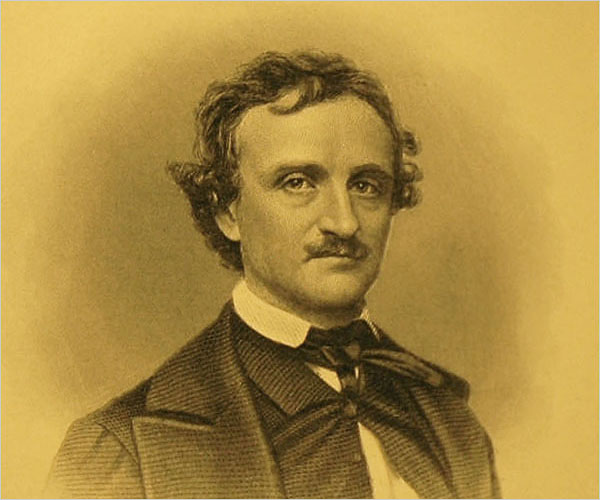About the poet:
Edwin Brock is a British poet. He was born in London on 19th October 1927. He worked as a police constable and an advertising copywriter until 1972, when he decided to become a freelance writer instead. He became poetry editor of the eminent magazine known as Ambit in 1960.
Influenced by American confessional poets, Brock writes about family relationships and childhood memories. His first collection of poetry was entitled An Attempt at Exorcism and was published in 1959. This was followed by other collections such as A Family Affair (1960) and With Love from Judas (1963), which contain numerous disquietingly intense treatments of domestic experience. A Cold Day at the Zoo (1970), The Blocked Heart (1975), and The River and the Train (1979) are among his subsequent volumes. Song of the Battery Hen (1977) and Five Ways to Kill a Man (1990) are selected editions of his poetry, the latter containing many previously uncollected poems. His later work is a combination of a disciplined freedom of form with an incisive straightforwardness to explore a wide range of social and personal concerns.
Brock’s other works include the autobiographical verse and prose work entitled Here Now, Always (1977) and the novel entitled The Little White God (1962). Brock has also written plays for radio and television.
Brock passed away on 7th September 1997.
About Five Ways to Kill a Man:
“Five Ways to Kill a Man” by Edwin Brock was first published in the year 1972, as part of his collection of poems known as Invisibility is the Art of Survival. Since then, it has become one of the most anthologized of Brock’s poems, along with “Song of the Battery Hen”.
The Setting of Five Ways to Kill a Man:
The setting of this poem changes from every stanza to the next. The 1st stanza is set in Jerusalem, where Christ was crucified. The 2nd stanza is set in a medieval English battlefield. The 3rd stanza is set in a gas chamber during WWI. The 4th stanza is set on the site of atomic bombings during WWII. The 5th and final stanza is set in the post-WWII world, the world contemporaneous to the pet himself.
Stanza-wise Summary of Five Ways to Kill a Man:
The poem consists of 5 stanzas. The 1st, 2nd and 4th stanzas are again made up of 7 lines. The 3rd stanza is made up of 6 lines. The 5th stanza is made up of 4 lines. Hence, the entire poem consists of 31 lines in total.
1st stanza:
There are many cumbersome ways to kill a man.
You can make him carry a plank of wood
to the top of a hill and nail him to it. To do this
properly you require a crowd of people
wearing sandals, a cock that crows, a cloak
to dissect, a sponge, some vinegar and one
man to hammer the nails home.
In this stanza, the poet describes the 1st way of killing a man. He is talking about the crucifixion of Jesus Christ. He says Christ was made to carry a log of wood uphill and then his body was attached to that log itself with the help of nails. A crowd of people watched this brutal killing and they were all wearing sandals that they could throw at Christ. A cock crowed to remind St. Peter that he had done as Christ had expected – he had denied knowing Christ at all. Christ’s cloak was torn off so that he may die naked and never be given a proper burial. When Christ asked for water, he was only given a sponge soaked in vinegar. Finally, the final nail was put in his body and he died on the cross.
2nd stanza:
Or you can take a length of steel,
shaped and chased in a traditional way,
and attempt to pierce the metal cage he wears.
But for this you need white horses,
English trees, men with bows and arrows,
at least two flags, a prince, and a
castle to hold your banquet in.
In this stanza, the poet describes the 2nd way of killing a man. He is talking about the civil wars in England during the Middle Ages, the most notable among them being the Wars of the Roses fought between the Houses of York and Lancaster from 1455 to 1485. In these wars, the soldiers of opposing armies often fought with swords that were marked with the emblem of the house that they were fighting for. The blacksmiths of the time was so advanced that these swords could easily pierce through the metal armours of the soldiers. They rode on white horses through the English countryside, often using bows and arrows and holding up the flags of their respective houses. After a war had been won, the winning prince would throw a banquet in his castle, as if the ruthless killing of men was something to be celebrated.
3rd stanza:
Dispensing with nobility, you may, if the wind
allows, blow gas at him. But then you need
a mile of mud sliced through with ditches,
not to mention black boots, bomb craters,
more mud, a plague of rats, a dozen songs
and some round hats made of steel.
In this stanza, the poet describes the 3rd way of killing a man. He is talking about warfare by gassing that became popular during WWI. The English army only needed the wind to blow in the right direction to release the contents of many gas cylinders towards the German army. However, as luck would have it, the wind direction abruptly reversed and the gas came back to the British army itself, killing many good soldiers. The other disastrous conditions of the wartime are also described by the poet. He mentions the underground trenches of the soldiers, the heavy boot on their feet, the holes in the ground that have resulted from the dropping of bombs, the bubonic plague, the songs that were sung to uplift soldiers’ morale and the metal hats on their heads.
4th stanza:
In an age of aeroplanes, you may fly
miles above your victim and dispose of him by
pressing one small switch. All you then
require is an ocean to separate you, two
systems of government, a nation’s scientists,
several factories, a psychopath and
land that no-one needs for several years.
In this stanza, the poet describes the 4th way of killing a man. He is talking about the atomic bombing of Hiroshima and Nagasaki during WWII. He says that since airplanes had been discovered by this time, American forces flew miles above these Japanese cities and detonated their bombs at the touch of a button. They are able to commit such a heinous crime because the Pacific Ocean separates America and Japan, and because their administration supports different sides in a war. American scientists had developed the atomic bomb in their factories after they heard that the Germans were building something similar at the behest of the psychopathic Hitler. Hiroshima and Nagasaki were so badly ravaged that no one could actually live there without being affected by radiation.
5th stanza:
These are, as I began, cumbersome ways
to kill a man. Simpler, direct, and much more neat
is to see that he is living somewhere in the middle
of the twentieth century, and leave him there.
In this stanza, the poet describes the 5th and easiest way to kill a man. He says that he has already described 4 of the many troublesome ways in which to kill men. But the simpler and cleaner way would be to let them live in the 1950s. The post-WWII era was filled with problems such as poverty, unemployment, inflation, hunger, and malnutrition. These problems were likely to kill a man naturally, without anyone’s active involvement, so the poet feels that this is the best way to kill men.
Some online learning platforms provide certifications, while others are designed to simply grow your skills in your personal and professional life. Including Masterclass and Coursera, here are our recommendations for the best online learning platforms you can sign up for today.
The 7 Best Online Learning Platforms of 2022
- Best Overall: Coursera
- Best for Niche Topics: Udemy
- Best for Creative Fields: Skillshare
- Best for Celebrity Lessons: MasterClass
- Best for STEM: EdX
- Best for Career Building: Udacity
- Best for Data Learning: Pluralsight














